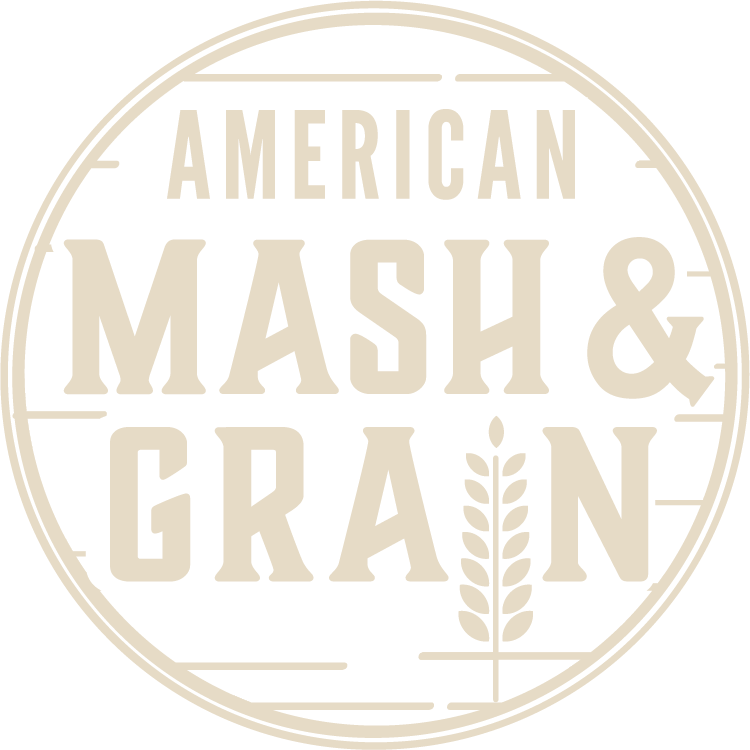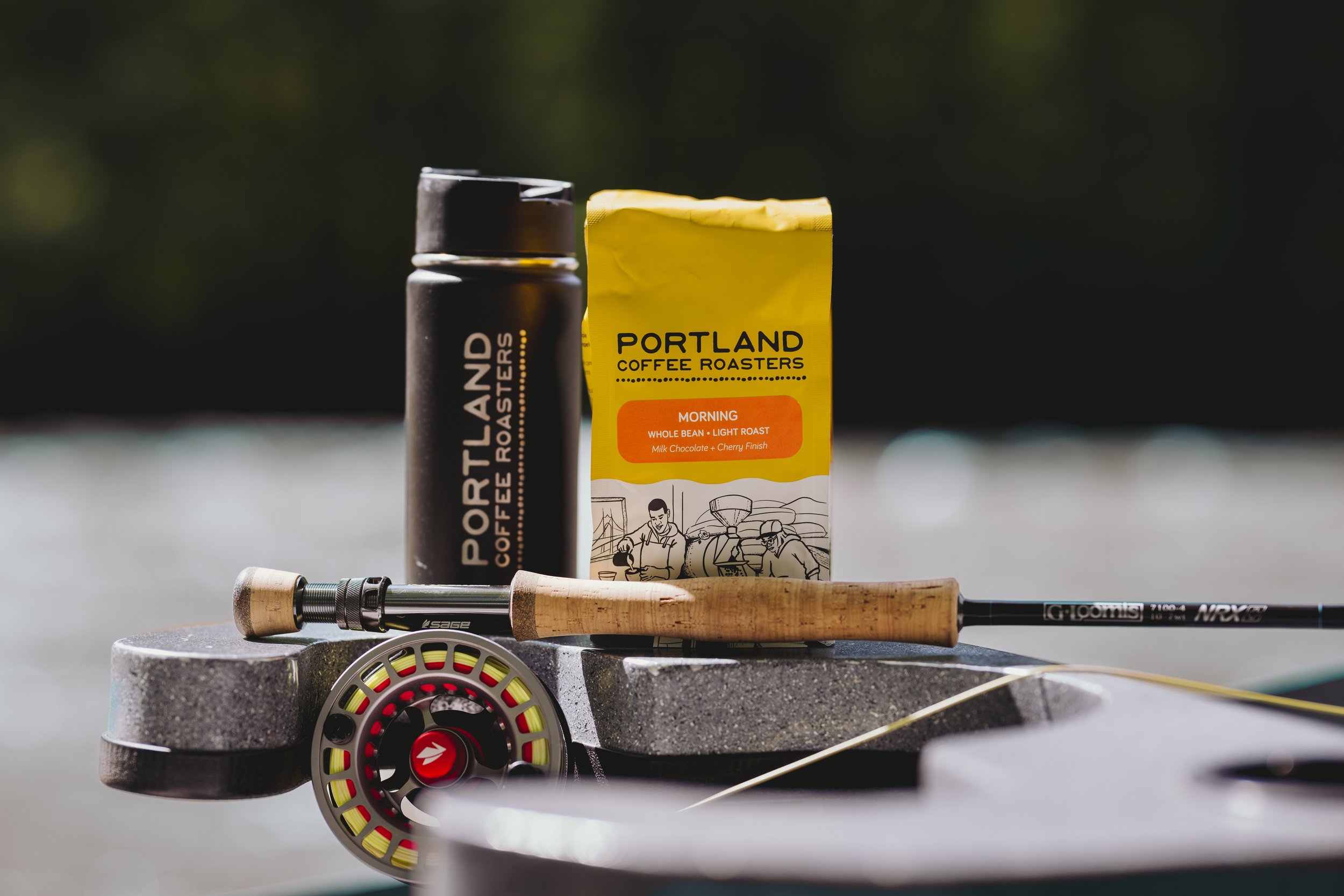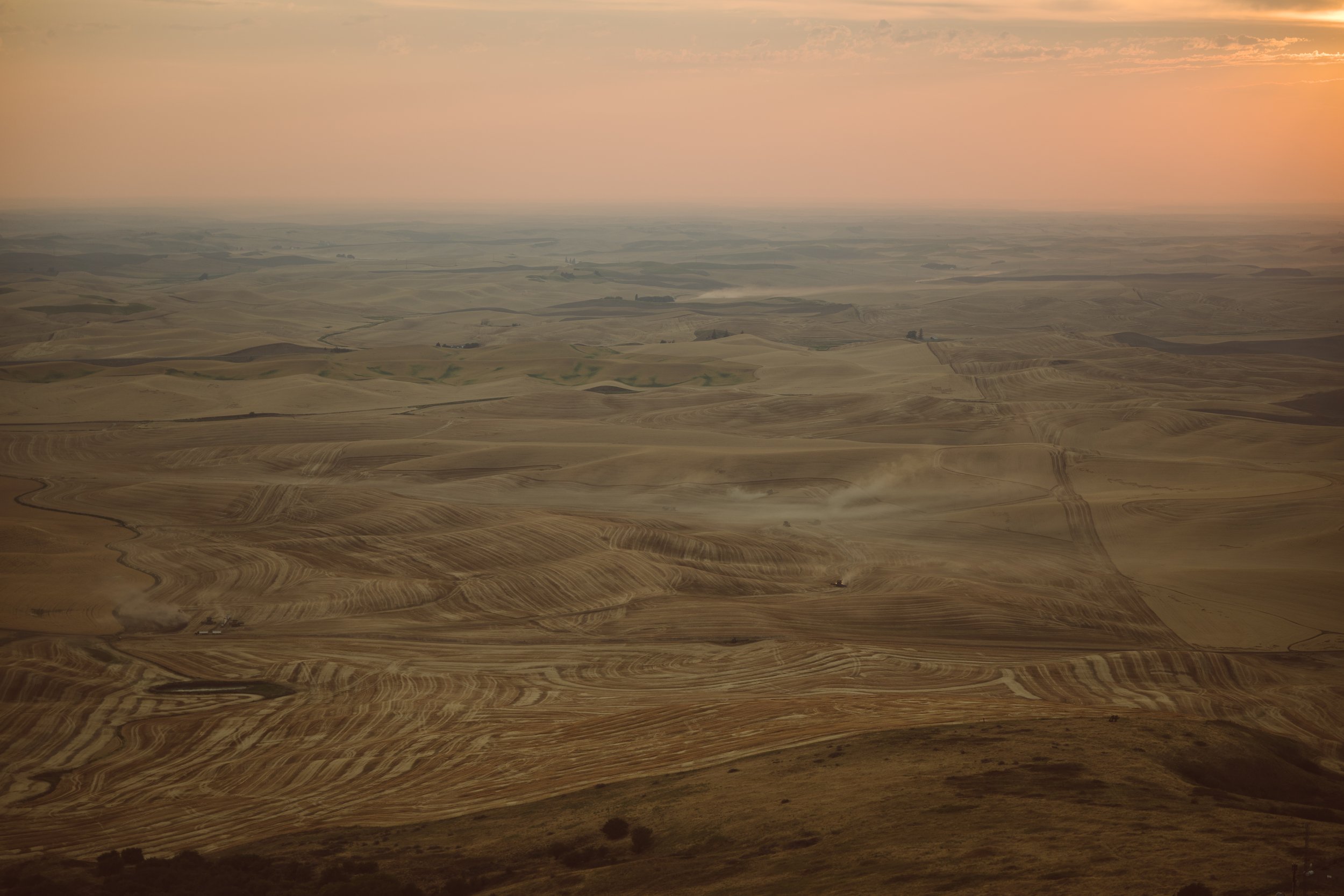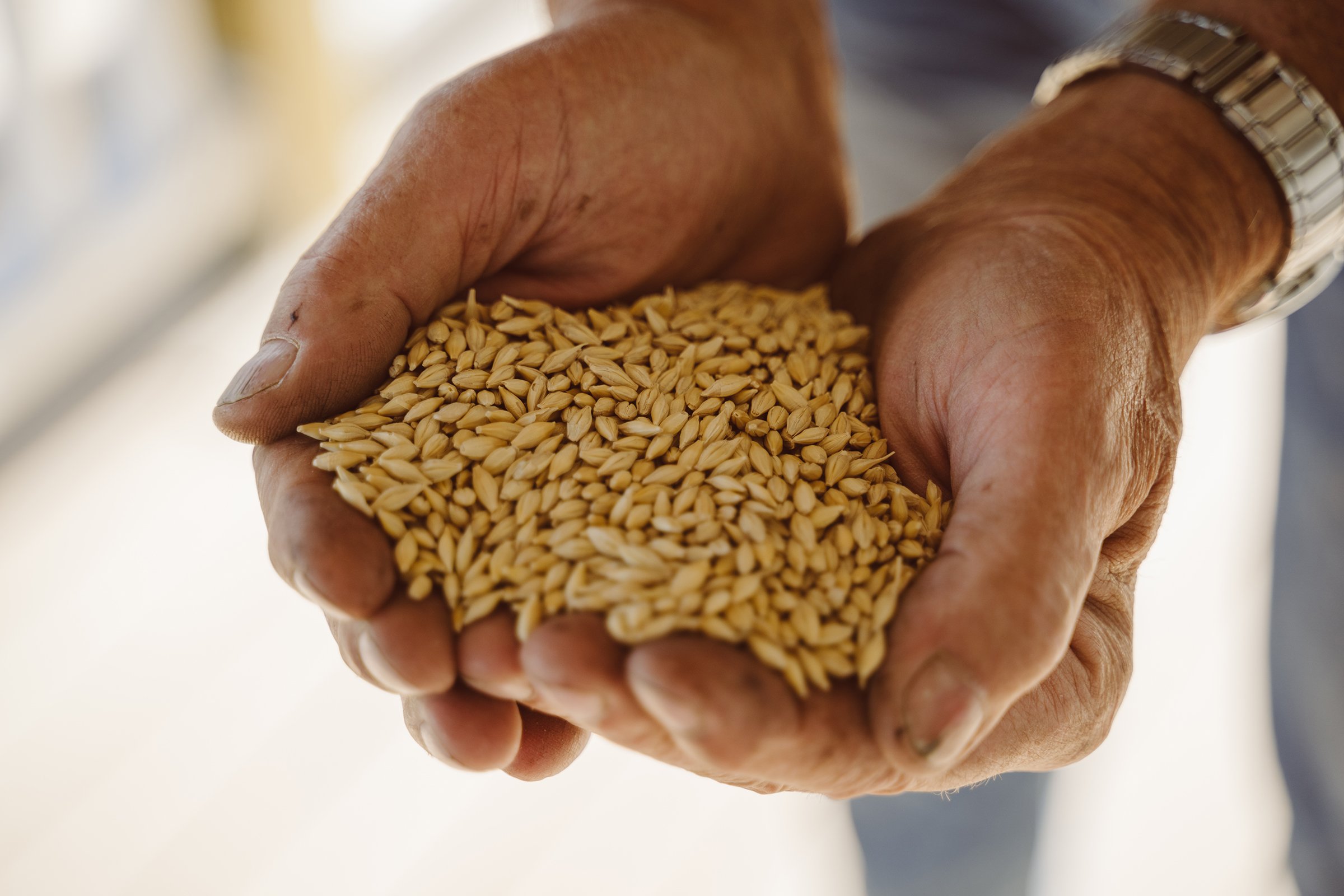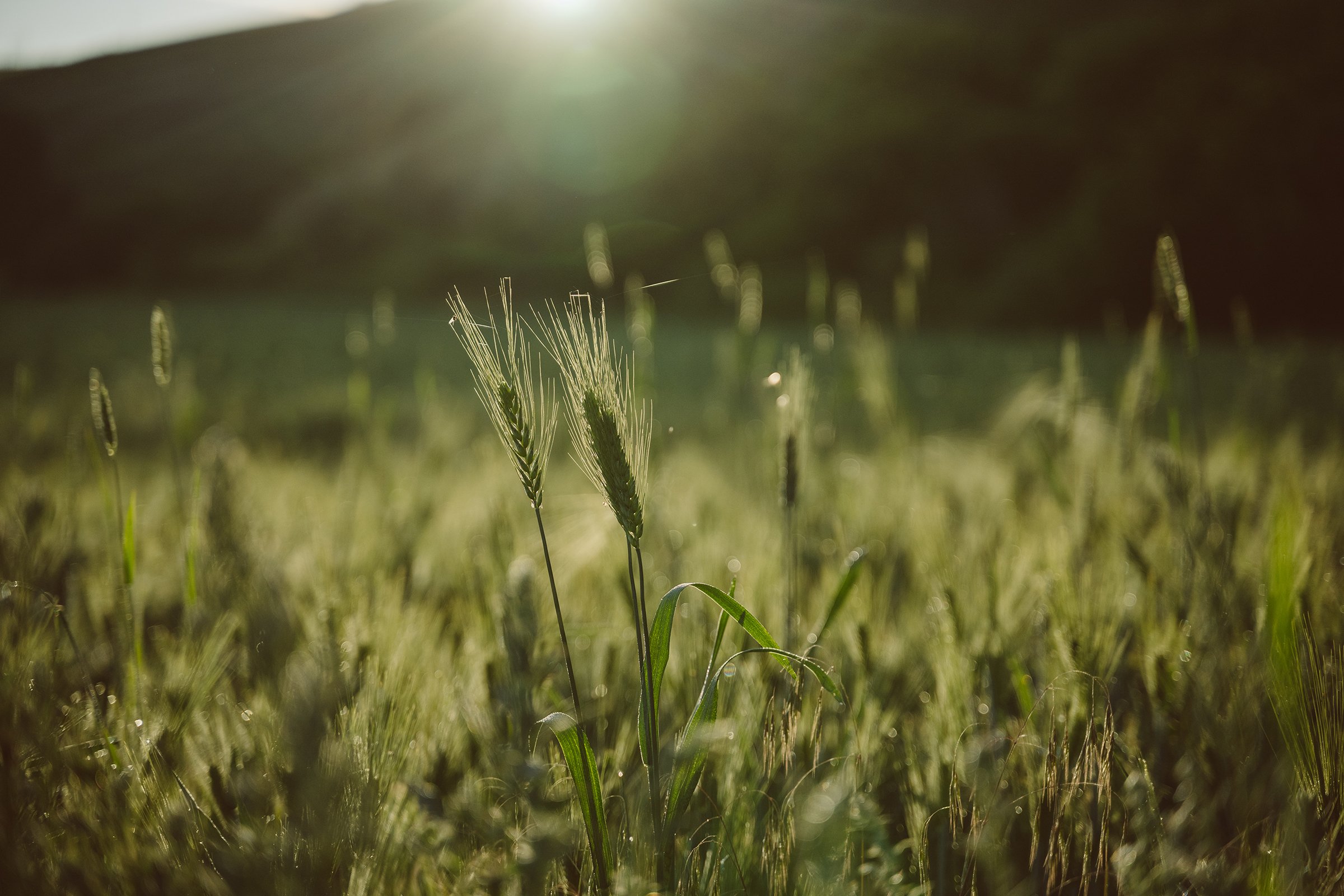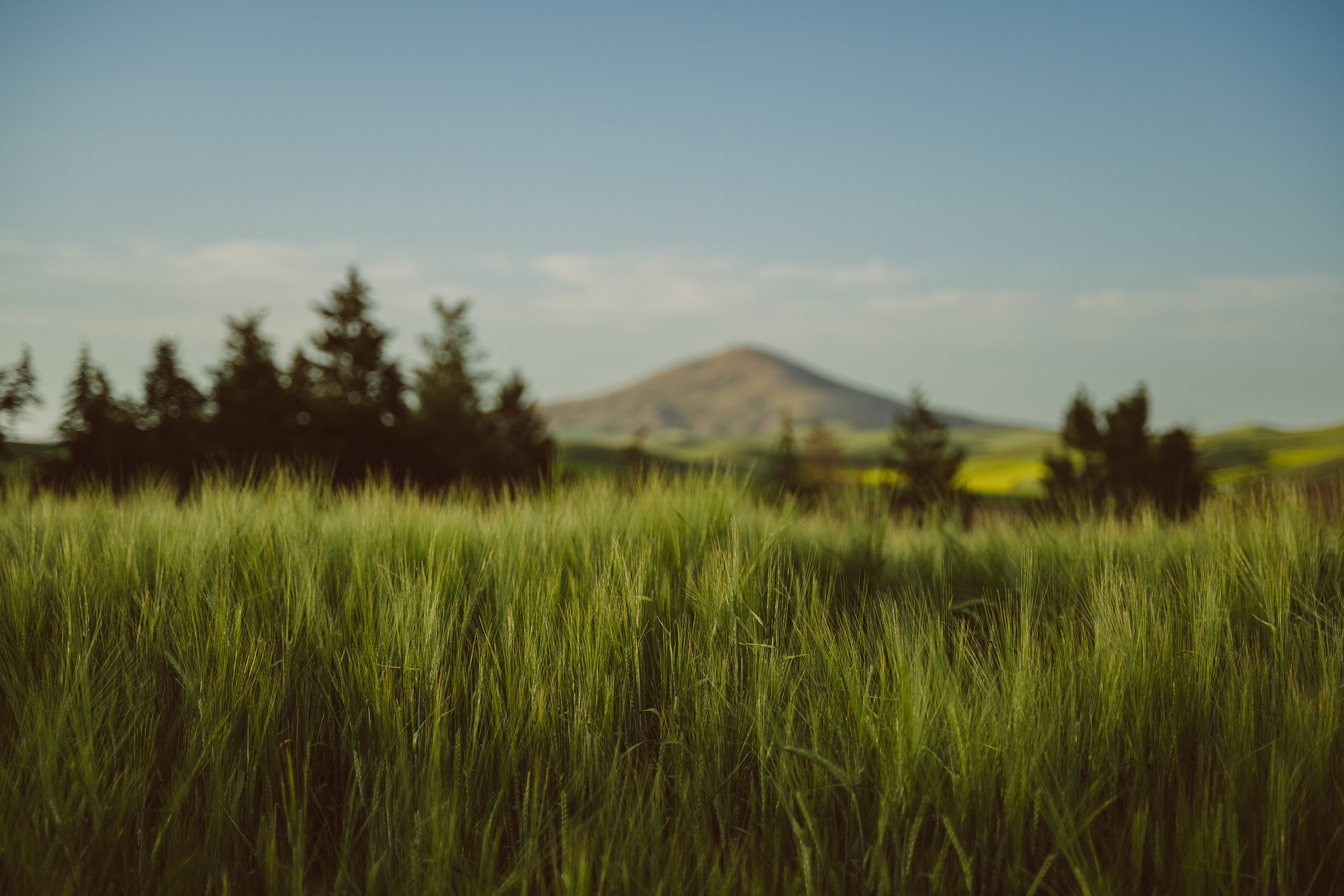Bird Creek Distillery
By Meghan Swanson
Like its wild, winged namesake, Bird Creek Distillery nests where it will. The award-winning whiskey brand could be called more of a collector than a creator; a magpie rather than a weaver bird. To dismiss it as covetous, or worse, a dilettante, would be a short-sighted view of Bird Creek’s interest in the craft. With the magpie’s discerning eye, they’re sifting out the most compelling treasures hidden in the places other hunters have forgotten. Although their means of production and even their mash bill might not stay constant, their keen instinct for quality does.
“We don’t have a flagship [product] yet, and I don’t think we will. I think what we’re doing is unique in that we’re spending the money on farmers.”
Mark Stell, founder of Bird Creek Distillery, has been furthering the cause of farmers globally since the early 1990s. He didn’t start out with grain, however; first, he fell in love with that tempting fruit so deeply embedded in Pacific Northwest culture: the coffee bean. Mark grew up in Kenosha, Wisconsin, on the banks of Lake Michigan, working all sorts of jobs in his father’s restaurant. “My dad was a 40-year restaurateur in Kenosha, had a steak and seafood place,” he recalls. “Right near the harbor there. I grew up washing dishes, bussing tables, fry-cook, you name it.” Mark remembers. In adulthood, he moved to Las Vegas and “played around in the casinos for a few years,” before moving out to Portland, Oregon for school. He attended Portland State University. “I got involved in a student group that really changed my perspective not only on doing business, but on how to approach things.” Mark says. The organization was AIESEC; the acronym stands for a long French name dating back to the organization’s founding in 1948, but no one uses the full name anymore.
As a student delegate on behalf of AIESEC, Mark attended the 1992 Earth Summit in Rio de Janeiro, Brazil. “We were considered the voice of youth in the world,” he recalls. “I got to go to Minas Gerias region and see some coffee-growing areas–and I just fell in love with the coffee-growing business,” he says. “How big it was, how much need there was for sustainable development.” he remembers. When he returned to Portland, he left school. “I knew what I wanted to do.” he says. He worked for a coffee roaster in Portland for a grand total of nine months before getting fired for looking for another job. “I was actually interviewing at lunch, and I came back, and I was fired.” Mark shares. In one of those fine twists of fate, the firing steered him toward success in the coffee-roasting business. “‘Well, I can do this. You [his former employer] can do it. I can certainly do it.’” he recalls saying to himself. He started a small coffee business, met his now-wife, and sold that business before starting Portland Coffee Roasters in 1996. Nearly 28 years later, he’s still at the helm.
“I was really focused on sustainable development. We do projects all over the world. We build schools…we’ve been doing a project in Colombia; we’ve put in bathrooms, septic systems, water filtration and helped obtain better crops for 165 farms.” Mark says. What really drew his interest to farming, after all the years of focus on sustainable business and fair trade with farmers, was investing in a farm with his wife and family. “Through the process of learning the coffee business, I thought I knew it all after 15 years,” he confesses. He found a business partner in Tanzania and together they started the coffee farm. “It was easily the biggest learning experience about farming,” he tells us. They started to introduce varieties of coffee Mark had traveled all over the world to get, from Panama, Colombia, El Salvador and beyond. When they got started 17 years ago, the farm was producing coffee that would score an 84 on a 100-point score; decent coffee, but nothing to write home about. Two years ago, the farm’s coffee scored 11th in the world in the prestigious global Cup of Excellence competition. “That was where I knew that, if you have a farmer that’s willing and able to have the good land and create good products, if you find them the right varietals, it can change their world.” Mark says.
“Whiskey is where coffee was 30 years ago.”
Mark’s somewhat unusual path into whiskey means he didn’t come from a beverage alcohol background at all, and he also doesn’t distill. He runs Bird Creek Distillery more like a coffee business; he purveys the finest, most unique, and best-tasting grain varieties he can find, then contracts with four other distilleries to actually distill that grain. Bird Creek’s home is Portland, Oregon, where they contract with two local distilleries who excel at making smaller batches of spirits. Mark likens them to ‘test kitchens’, where they can get a feel for the performance of a new grain variety before taking it to their bigger distilling partner in Washington State to do a larger run. The finished spirits come back to Portland to age, be evaluated, and get bottled onsite.
How does a coffee guy get into whiskey? The same way anyone does; tasting, experiencing, and learning what he liked and didn’t like. Mark visited the Bourbon Trail in Kentucky, then visited Scotland and tasted his way through its older whiskies. The more he tasted, the more he began to understand, “What I was tasting was age, and process, and maybe something that was grown 30 years ago with a product that was palatable.” he explains. That’s when it hit him. “I feel like single malt is the one category in the alcohol business with the biggest opportunity for impact on the consumer,” he says, “Where you can find a great farmer producing a great product, promote that farmer, and showcase the entire supply chain.” he finishes. Mark started to dig around and confirmed what he had suspected about the whiskey industry. “I realized that they just stopped really finding good raw products.” he says.
“Just like in coffee, there are brokers or cooperatives; in this case, it’s malting houses,” Mark explains. “We knew we were not going to automatically go straight to a farmer. We went through the process of finding good malting houses that had what we were looking for.” he tells us. “And now they come out of the woodworks and say, ‘We have this interesting thing, would you like to try it?’ You know, it’s almost always yes,” Mark says.
Like other distillers who laser-focus on the grain they’re starting with, Mark also sought help from the local land-grant university; a sure-fire place to find people as obsessed with grain as he is. Oregon State University had a new, extremely rare varietal for him that had been cross-bred for fungal resistance; it is only grown at one farm belonging to an alumnus, and malted only onsite there. This unique new barley is called Full Pint, and when turned into an American single malt whiskey, has netted Bird Creek double gold at the New York Spirits Competition and a platinum at the ASCOT awards. “Oregon State University is the premier barley-breeding university in the country,” Mark opines. “They’re lightyears ahead of everybody.”
Cutting-edge new varietals aren’t Mark’s only interest; heritage grains, especially those that have nearly been phased out of use entirely, are another place to find diamonds in the rough. Washington state’s Palouse region, spilling over the state’s eastern border into Idaho, is a grain-growing paradise of rolling golden hills. Joseph’s Grainery, in Colfax, Washington, grows Baronesse barley there. It is a barley of German origin bred for use in beer, and Joseph’s is one of the last places in the country licensed to grow it. “Globally, it’s owned by a big multinational, and basically they don’t want it to grow anymore because they want to sell you some other crap,” Mark reveals. Showcased in an American single malt by Bird Creek, it also boasts gold from the New York Spirit Competition and a double platinum from the ASCOT awards.
Taking niche grain varieties grown in remote places like Oregon’s high desert or Washington’s Palouse and turning them into award-winning whiskey is exactly what Mark is trying to do; he wants the public to be able to visualize the transparent chain stretching from Bird Creek’s tasting room all the way back to the farmer that grew the barley that ended up in their glass. “We should support our American farmers. They do a great job, and a lot of these small farmers are trying to figure out niches to stay afloat,” Mark points out. “That’s really what our business model is, is to tell people ‘Hey, this farmer does a great job. This whiskey is excellent because of this varietal.’”
“There’s a reason people are here, and their thirst for adventure doesn’t end with the outdoors. It’s about good beer, good wine, good coffee, good whiskey, good…you name it, we have it.”
As someone who didn’t grow up in the Pacific Northwest, or even visit as a kid, Mark didn’t know what he was in for when he finally made his way out to Portland. “I grew up in the Midwest, I lived in the desert; and when I first got here it blew me away.” he says. “You’re surrounded by massive volcanoes, and these unbelievably spectacular outdoors–it’s what makes this place special, whether you live here or visit here.” he tells us. “From salmon fishing at the coast to sturgeon fishing on the Columbia [River], there’s downhill skiing and backcountry skiing, and it’s just–every single thing you can think of is within an hour radius of Portland. That’s the beauty of this area.” he tells us.
Mark brought his love for the Pacific Northwest to the table when he started to build his new whiskey brand with design firm CF Napa Brand Design. “We had the concepts of our brand, and we went through a few names, like everybody does.” he recalls. They got shut down by the Scottish Distillery Association on one possibility. “Naming is brutal,” Mark remarks. “My wife and I have a place here at the base of Mount Adams [located in Washington state], that’s the mountain on the bottle. Bird Creek [Meadows] happens to be our favorite hike,” he explains. “It’s considered a rare hike, it’s only open one month a year.” he tells us. After a fire ravaged the area a decade ago, human use of the area is kept to a minimum to protect the healing ecosystem. “It’s beautiful, it’s like 6000 feet altitude, there’s all kinds of flowers and lakes and birds and animals everywhere.” Mark describes. Appreciating the rare and special is what Mark wanted the brand to be all about: Bird Creek was the perfect name for the distillery, and had the added advantage of still being untrademarked at the time.
Mark describes the Bird Creek bottle design as ‘a little bit of cognac and a little bit of bourbon’. It’s a fitting descriptor for a bottle that manages to convey elegance and rusticity at once. Mount Adams is not on the bottle, but in it; the bottom of the bottle forms a replica of the mountain, rising up into the whiskey, carrying the amber liquid like a sky upon its shoulders. The neck is long and austere, the body of the bottle rounded and somehow homey. “It looks so nice on the shelf, especially on a backlit bar, it looks phenomenal.” Mark says proudly. “When I was researching bottle designs, I spent many nights in a bar looking at which bottles I liked, and what I didn’t like, and why I didn’t like them,” he explains. To preserve the clean body of the bottle, he kept the majority of the product information on the neck label, rather than the body label as is usual. Bird Creek prints those neck labels in-house. “If you know anything about printing labels, it takes forever, and if you make mistakes, a lot go to waste.” Mark tells us. “I learned that in the coffee business, every bag has a label or two or three, and we throw hundreds of hundreds away every week or every month,” he says. Instead of prepping thousands of labels ahead of time and risking sitting on a huge supply of unusable labels when the information on them changed, he decided to go with their own set-up that can print labels as-needed. “I spent more money upfront, but I have zero waste. And that’s part of our mission, is that we want to be really sustainably focused.” he finishes.
As a brand focused on collecting the best, most interesting grain varieties out there and changing them into excellent American single malts, Bird Creek provides something for the collectors among their fans on each bottle. The cork bears a small, working compass, with an illustration of an animal visible beneath the needle. “They’re all animals that live on the mountain,” Mark explains. There are six in all–for now. Among them is a bird with a red mohawk and a cheeky demeanor. “I knew very quick, we needed to have a bird. So we looked at what bird is from that area, and found the Hudsucker woodpecker. I’m like, ‘Never heard of it.’ So then we looked it up,” Mark recalls. “And that’s where I found the first lithograph. They’re all designs from the ‘20s and ‘30s.” he explains. All Mark’s brand choices go back to the initial advice he sought from veterans in the whiskey industry. “‘Don’t just do good whiskey, create a brand around it.’” he quotes. “That brand is exploration of varieties…being a compass, searching out something. For us, our adventure is to find the best [grain] variety in the world.” he reveals. “And we’re just getting started.”
“The problem is that nobody else is really pushing the envelope with variety knowledge. I wish there was a grain-tasting competition that also focused on distilling.”
Full Pint and Baronesse might have driven Bird Creek to a hot start in the whiskey world–after all, the brand only made its debut in November of 2022 (Mark began to lay down barrels in 2017) – but Mark is not one to rest on his laurels. Bird Creek just passed the two-year aging mark on their American single malt made from a variety of barley called Purple Egyptian. Another rare grain grown on the Palouse, it was brought to the region by Russian immigrants. The ancient grain dates back to 5 B.C.E., and Mark can’t wait to share the story with whiskey drinkers. “Think about this. You could be one of the few that have tried it in a distillate in the last 5,000 years…because it’s an ancient grain, and really hasn’t been in the mainstream for a long time.” Though it proved difficult to work with–it needs to be pulverized, in a couple of instances required the addition of enzymes to activate, and is ‘ridiculously’ expensive, in Mark’s opinion–the story was too good to leave untold. How is aging going? “I’m thinking after two years of it sitting, it’s really coming out into its own flavor profile. It’s red hot, spicy, like, it smells like cinnamon. It’s so radically different that it’s exciting.” Mark tells us with pride. He believes it will either make an excellent contribution to a future blend, or with more time, will be very interesting on its own.
Keeping with his interest in both long-forgotten varieties and the cutting edge of agricultural development, Bird Creek just began work with Oregon Promise barley, part of the 2022 Oregon State University Barley Project. “I think we’re the second distiller who has distilled it,” Mark comments. It’s so new he has no insight yet into the character it will develop, but that’s alright by him. “Everybody gets taken aback by the fact that we are not trying to achieve consistency. But the reality is that we are so small-batch that every barrel makes a difference.” he says. “That’s the point of experimenting with a single variety. It gives you the opportunity to really find something good.”
That ‘something good’ is the key to Mark’s business model that he’s been following since Rio. “When you get involved in a student group, usually when you’re young, you have these passions about something. Unless you take it into a business model, you kind of lose it,” Mark points out. “I never lost it. I’ve always felt like giving back or working with communities that are great business partners was a great business model.” he explains. “In the end, the consumer, if they get enough detailed information, they will pay for it.” he says. “And they will actually enjoy the story of how and why the farmer chose the barley, and they can taste the difference,” he asserts. That’s where he hopes Bird Creek’s American single malt whiskey will shine. “American farmers are probably the least independently promoted for their farm products in the world,” he explains. “We hope that’s where our [business] model will, in the next ten years, find a variety of barley that changes the single malt industry for the best.” he says.
“All adventure, whether it’s tasting whiskies or going outdoors, starts with a trail. You want to walk towards…where you’re going to see something spectacular. Whether it’s building a business or taking a hike, it’s the same thing.”
Bird Creek Distilling was born of a desire to sift the wheat–or in this case, barley–from the chaff, and to build a sustainable beverage alcohol business that would partner with American farmers to showcase their hard work. So far, Mark Stell and the team at Bird Creek have met with impressive success. Theirs is a new sort of grain-to-glass, where the grain is the ultimate concern. Their entries into the burgeoning American single malt space are both unique and high-quality, and we can’t wait to see what forgotten or of-the-moment grain variety they discover next.
